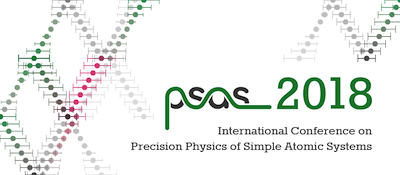Speaker
Description
Theoretical studies of hydrogen molecule is the cornerstone of the molecular quantum mechanics. Due to its simplicity, the achieved precision is the highest among all molecules and still has a potential of significant enhancement. This high precision of theoretical predictions for H$_2$ leads to improved tests of quantum electrodynamics (QED) and improved bounds on hypothetical interactions. Moreover, at the $10^{-7}$ cm$^{-1}$ precision level the dissociation energy is sensitive to the proton charge radius, which may help to resolve the so called proton radius conundrum. This requires high accuracy calculations of not only nonrelativistic energies, but also leading relativistic and QED, as well as the higher order QED corrections. In fact, the nonrelativistic energies can already be calculated with the precision of $10^{-7}$ cm$^{-1}$. The the higher order QED contribution has very recently been calculated using explicitly correlated Gaussian (ECG) functions with $1+r_{12}/2$ prefactor ({\it rECG}) that makes the interelectronic cusp condition to be exactly satisfied. We provided improved results for the dissociation and the fundamental vibrational energies. These results open the window for the high precision spectroscopy of H$_2$ and related accurate tests of fundamental interactions models. Recently, we also reported also highly accurate results for the leading relativistic correction using {\it rECG} functions and conclude that the compilation of previous results has underestimated uncertainties. We will also present the latest advances in the calculation of nuclear mass relativistic corrections, which are currently the main limitation of theoretical predictions.

